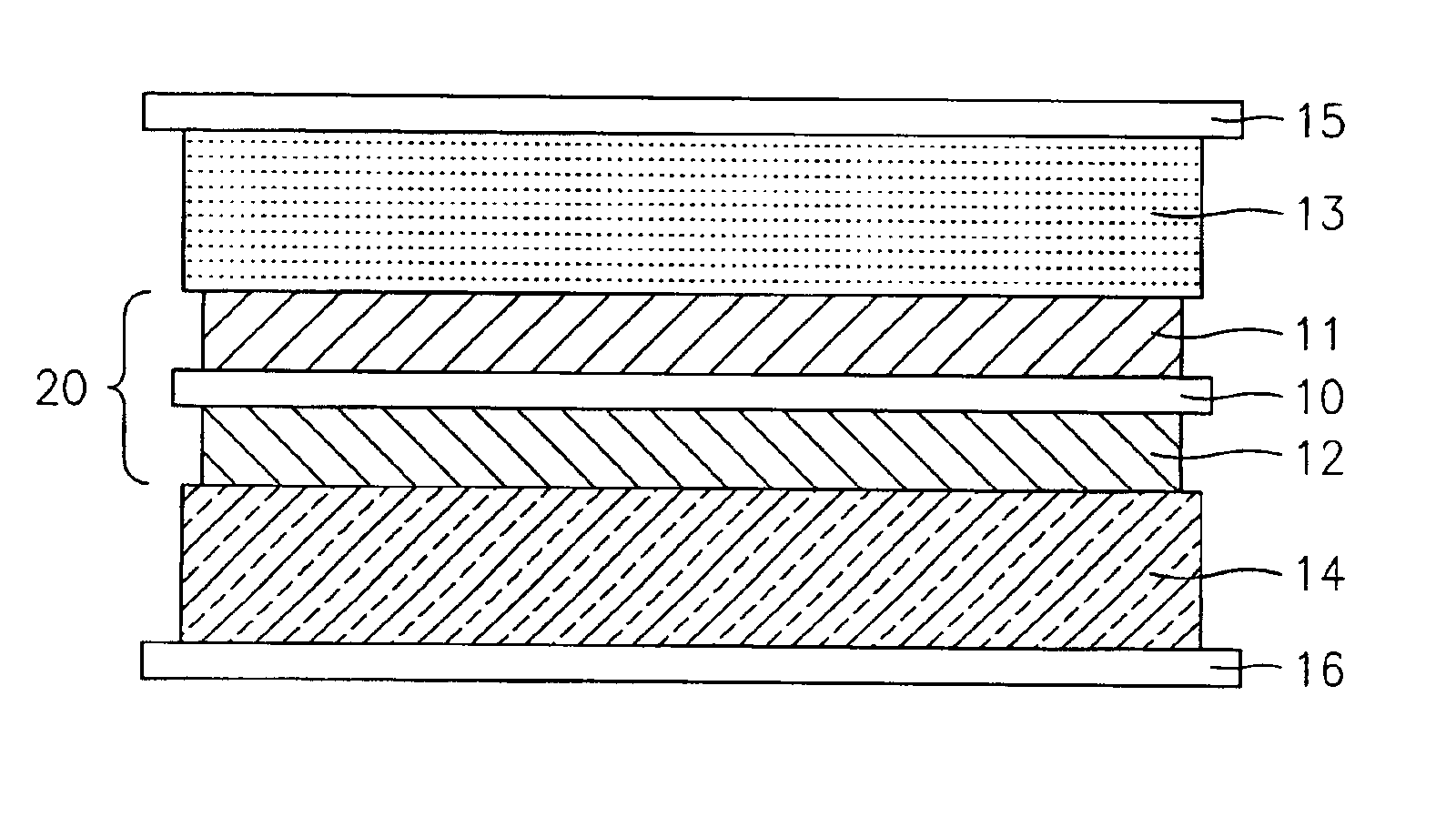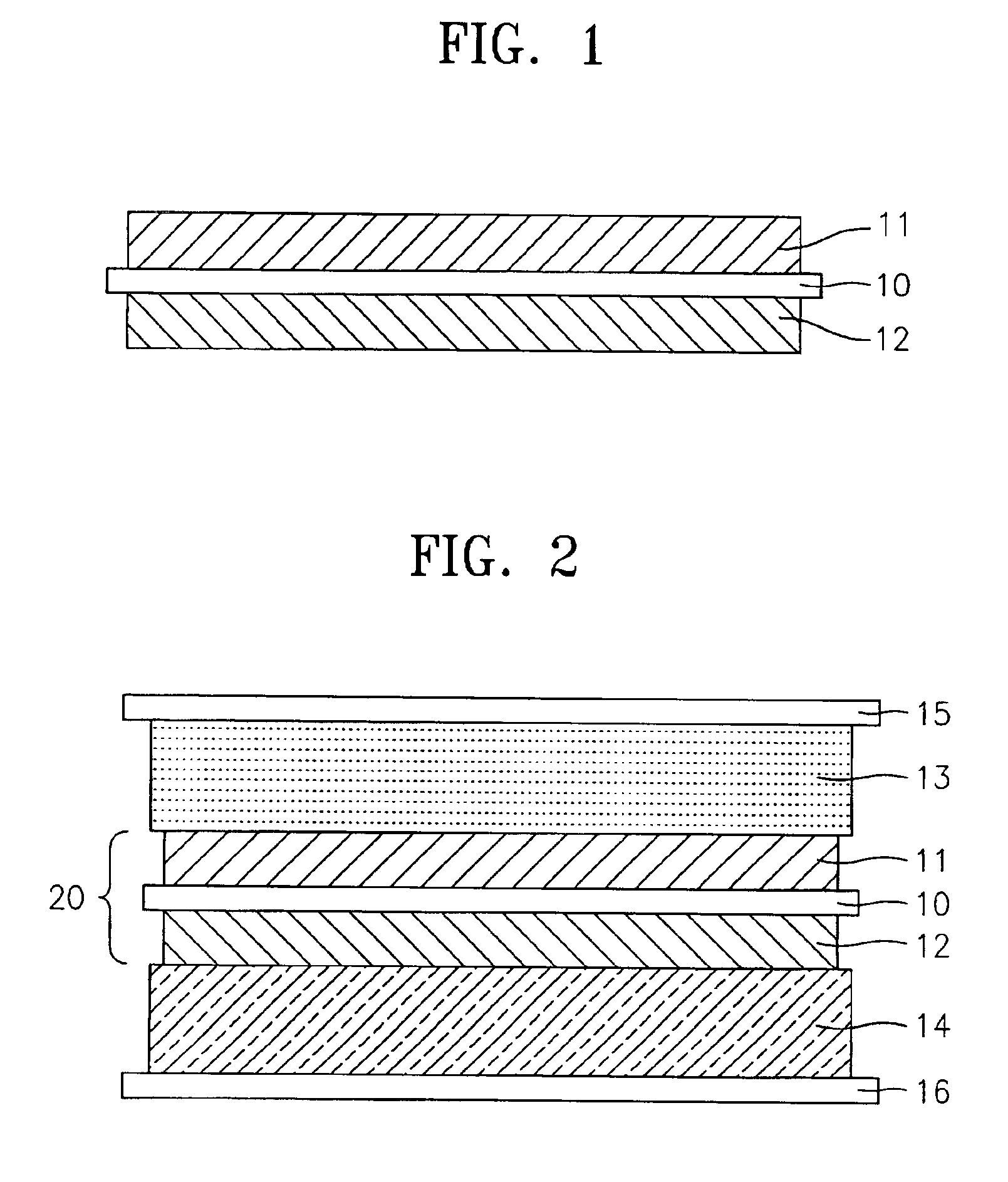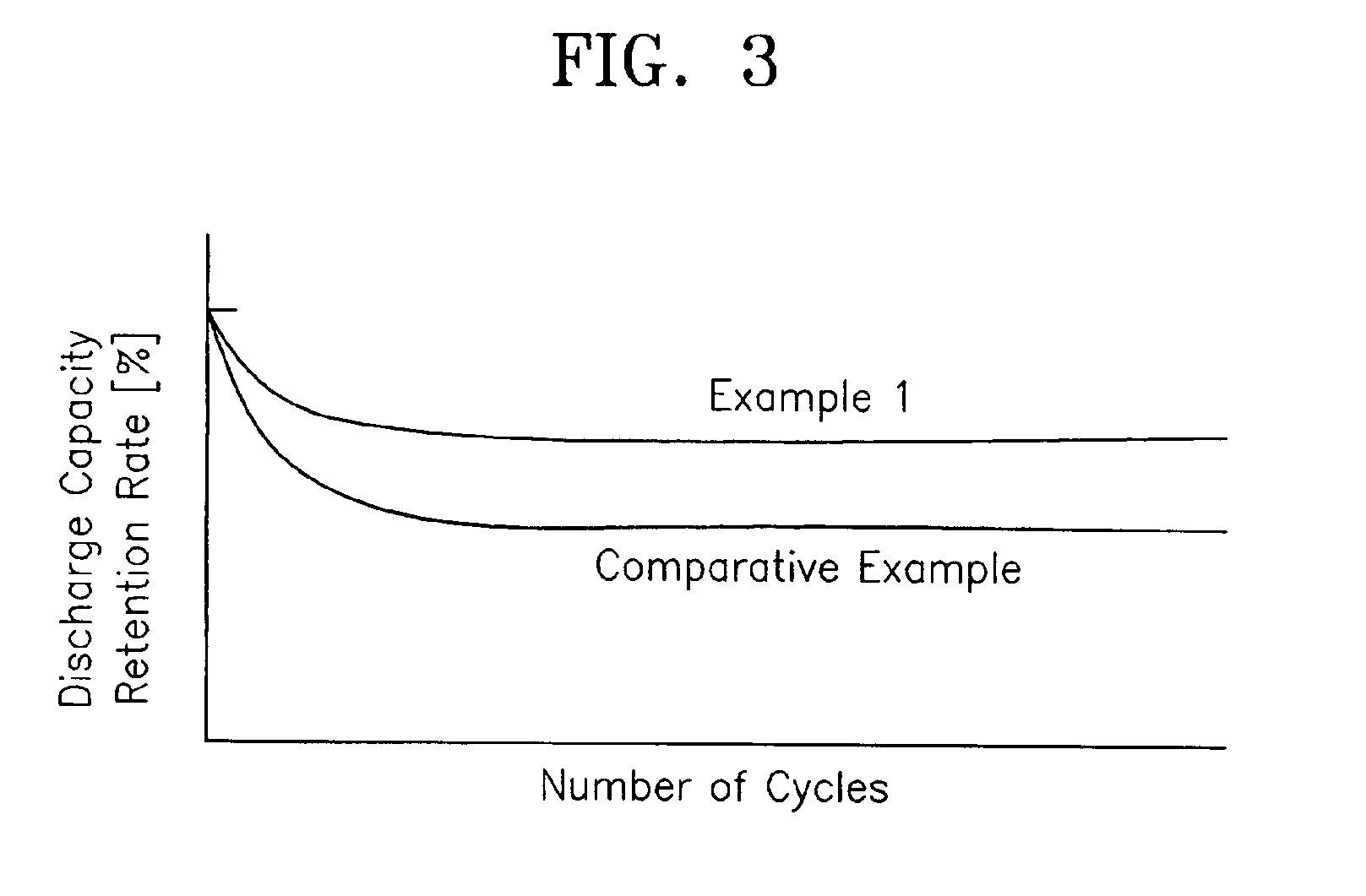Lithium polymer battery
- Summary
- Abstract
- Description
- Claims
- Application Information
AI Technical Summary
Benefits of technology
Problems solved by technology
Method used
Image
Examples
synthesis example 1
[0076]1036 g of ion exchange water, 0.8 g of methylcellulose, 3.6 g of diisopropylperoxydicarbonate, 5.0 g of vinylpyrridine, 372 g of vinylidenefluoride and 28 g of hexafluoropropylene were put into a 2-liter autoclave, and then suspension-polymerized at 28° C. for 86 hours. After polymerization, the polymer slurry was dewatered, washed with water, and dried at 80° C. for 20 hours to produce a powdered polymer A with an intrinsic viscosity of 1.18, yielding 80%. 10 wt % of the polymer A was placed in water and stirred. Then, the pH level of a supernatant liquid was measured, proving to be 8.4.
synthesis example 2
[0077]1036 g of ion exchange water, 0.8 g of methylcellulose, 3.6 g of diisopropylperoxydicarbonate, 8.0 g of vinylpyrrolidone, 364 g of vinylidenefluoride and 25 g of hexafluoropropylene were put into a 2-liter autoclave, and then suspension-polymerized at 28° C. for 86 hours. After polymerization, the polymer slurry was dewatered, washed with water and dried at 80° C. for 20 hours to produce a powdered polymer B with an intrinsic viscosity of 1.18, yielding 80%. 10 wt % of the polymer B was placed in water and stirred to extract an aqueous liquid (i.e., a supernatant liquid). Then, the pH level of a supernatant liquid was measured, proving to be 8.2.
synthesis example 3
[0078]1036 g of ion exchange water, 0.8 g of methylcellulose, 3.6 g of diisopropylperoxydicarbonate, 7.6 g of dimethylaminoethylacrylate, 364 g of vinylidenefluoride and 25 g of hexafluoropropylene were put into a 2-liter autoclave, and then suspension-polymerized at 28° C. for 86 hours. After polymerization, the polymer slurry was dewatered, washed with water and dried at 80° C. for 20 hours to produce a powdered polymer C with an intrinsic viscosity of 1.18, yielding 80%. 10 wt % of the polymer C was placed in water and stirred. Then, the pH level of a supernatant liquid was measured, proving to be 8.9.
PUM
| Property | Measurement | Unit |
|---|---|---|
| Polymeric | aaaaa | aaaaa |
Abstract
Description
Claims
Application Information
 Login to View More
Login to View More - R&D
- Intellectual Property
- Life Sciences
- Materials
- Tech Scout
- Unparalleled Data Quality
- Higher Quality Content
- 60% Fewer Hallucinations
Browse by: Latest US Patents, China's latest patents, Technical Efficacy Thesaurus, Application Domain, Technology Topic, Popular Technical Reports.
© 2025 PatSnap. All rights reserved.Legal|Privacy policy|Modern Slavery Act Transparency Statement|Sitemap|About US| Contact US: help@patsnap.com



